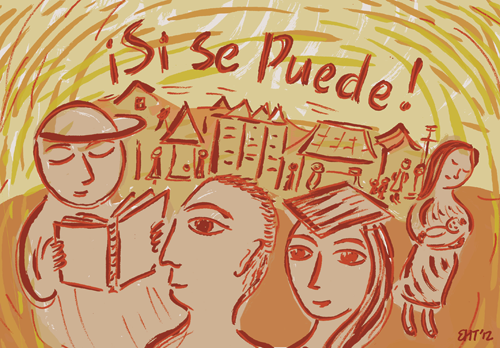Pornography might soon be taught in schools in England. According to the BBC, “The Sex Education Forum wants pornography taught ‘in terms of media literacy and representation, gender, sexual behavior and body image.’” They are pushing for it to be incorporated into the general sex education curriculums of high schools.
Teaching about porn in high schools
Pornography might soon be taught in schools in England. According to the BBC, “The Sex Education Forum wants pornography taught ‘in terms of media literacy and representation, gender, sexual behavior and body image.’” They are pushing for it to be incorporated into the general sex education curriculums of high schools.
Some parents are skeptical, and understandably so. There are few things I want to protect children from more than porn. They’re growing up with an unhealthy understanding of sexuality and body image as it is; they don’t need to encounter the mother load of warped imagery at a young age.
Not only is porn a powerful tool of misogyny—taking women’s bodies and sexuality and offering their plastic representations as desirable toys to be used and then tossed—it’s equally harmful in its representation of men and their sexuality.
It perpetuates the unhealthy ideology of male dominance, power and, often, violence—along with female submissiveness and powerlessness. It characterizes this as normal sexual behavior or, even worse, a fantasy.
Problem is, it’s being acted out in millions of households and in millions of minds around the world. It’s dangerous. So why would I want to bring it into my kid’s classroom? For that very reason.
When statistics show that on average kids encounter porn by age 11, it’s scary to think about how they make sense of it in their young minds. As much as parents may want to be the ones explaining and talking their children through images they’re faced with, the chances that they’ve already found it are high—especially today, when you can’t Google the word “puppy” without seeing boobs.
According to the American Psychological Association, studies of 13- to 18-year-olds revealed a correlation between boys viewing porn and seeing women as “playthings.” They were less prone to think that affection was necessary in a sexual relationship and were more likely to view it as a “purely physical function like eating or drinking.”
Children developing ideas about sex outside of parental guidance is nothing new. In fact, when talking to my peers it was rare to find anyone who’d had a healthy conversation about it growing up. There were the usual stories of stumbling upon information through conversations with highly
(un)knowledgeable friends or misplaced DVDs. It’s sad but true. As much as we glorify sex in this country, we have no clue how to talk about it.
Would I want my kids to find out about porn from their teacher in school? No. But would I rather they do it on their own? Even less.
The Sex Education Forum suggests that teachers broach the subject in the context of a broader discussion, one that considers the media’s power to impact our thinking and worldview. They point kids to the skewed perceptions and commentaries that all media provides us and our need to critically analyze the images we consume.
Those Brits are definitely onto something, but I can’t help but wonder if we’re coming at it from the wrong place. Why do we try to affirm healthy body images and sexual relationships in contrast to and by disaffirming bad ones?
That’s just trying to prove a positive by a negative.
We’re constantly telling our girls that super-skinny models aren’t the norm and that they don’t have to look like that to be beautiful, but if they rarely see anything else then why would they believe us? If we tell boys that their masculinity isn’t defined by their number of sexual partners and how many muscles pop out of their shirts, but we don’t show them other models, once again things won’t change.
It’s the same with porn. We can highlight how it creates false expectations, but if we don’t begin by presenting children with real and healthy expectations before they’re faced with the other stuff, then we’re fighting an uphill battle.
Yes, I think it’s critical that we provide children with a safe and shame-free context to dialogue about porn, but even more so a place where they can find beauty in the cellulite, the bad breath, the rolls, the awkward—and still find it sexy.
Manu Sareen, the Danish minister for gender equality, put it perfectly: “We can put an abundance of filters on computers…but that won’t make a difference. The filters must be inside children’s and young people’s heads.”






Plus it’s just plain sick and gross, Jeannette. Only adults can handle pornography, or should have a choice about whether to consume it (I recommend to adults to avoid it)
. Children should not be exposed to pornography for the same reasons they should not be handled nickel bags of crack by the principal to sell and distribute in-between classes. It’s just plain wrong, and not for children.
The cheap justifications for this move (“in the context of media literacy”) shows how warped some of the educational minds have become in England.
Children are children, until at least the age of 18. They should be taught that they are too young for sex until then, in general. Pornography would be a warped increase away from the idea that we still have obligations to our children to teach them some version of morality.